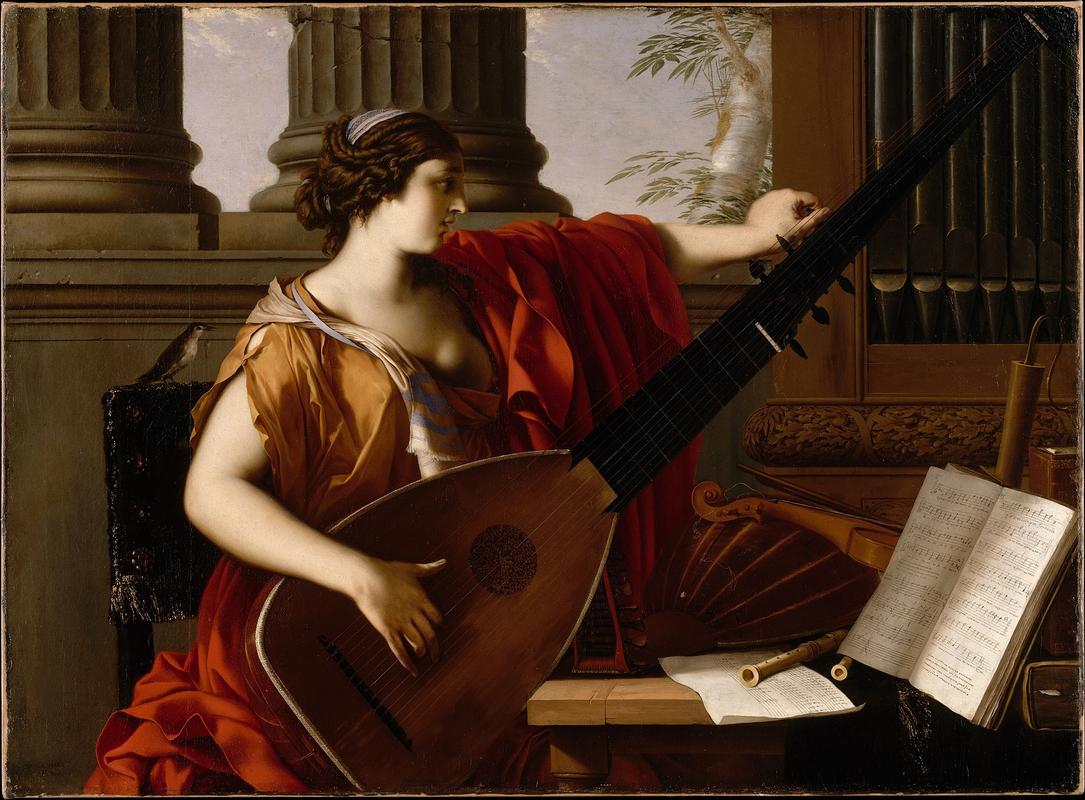More about Allegory of Music

Contributor
Laurent de La Hyre’s Allegory of Music shows us what music was like a few centuries ago.
The huge guitar-like instrument the dramatically dressed woman is tuning in is called a 'theorbo' and belongs to the lute family. Since the image is an allegory and therefore a representation of music as a whole, it also includes other Baroque instruments. Next to the woman, for example, is a violin with a broken string and two flageolets, which also belong to the flute family. In front of her is a book that shows both the notes for vocal music and the lute.
The tuning of the instrument is a metaphor for harmony - which may seem obvious if you’ve ever heard someone play a song on a guitar that wasn’t tuned. The bird next to her is supposed to portray the contrasting voice of nature in comparison to the voice of humans and their theoretical approach to music.
La Hyre’s painting is part of a series that depicts allegories of the Seven Liberal Arts: music, grammar, rhetoric, dialectic, arithmetic, geometry, and astronomy. It was commissioned by a member of the Council of State named Gédéon Tallemant who wanted them for his house in the Marais district in Paris. Originally, this work was completed by two putti – aka fat babies – holding a viol and a sheet of music.
Allegory of Music was part of an exhibition at the Met that asked the question of what people heard when they looked at paintings featuring musical themes by Caravaggio and his contemporaries like Laurent de La Hyre. The exhibition provided similar instruments to those shown in the artworks as well as a recording of what the instruments depicted in the images sound like. Unfortunately, the exhibition ended in 2015, but you can still type “theorbo” into the search engine of your choice and listen to its sweet tunes.
Sources
- Scherer, Barrymore Laurence. “Arts in Review -- Art: When Music was Revered.” Wall Street Journal, Feb 17, 2015.
- Sotheby’s. “Workshop of Laurent de La Hyre Allegory of Music: Catalogue note.” Accessed September 14, 2022. https://www.sothebys.com/en/buy/auction/2021/old-masters-day-sale/alleg….
- The Met. “Allegory of Music.” Accessed September 14, 2022. https://www.metmuseum.org/art/collection/search/436836.
- The Met. “Painting Music in the Age of Caravaggio: Exhibition Overview.” Accessed September 14, 2022. https://www.metmuseum.org/exhibitions/listings/2015/painting-music-age-….











